Hannibal ad portās: How 37 African elephants crossed the Alps.
The incredible crossing of Hannibal through the Alps that remains a testament to his daring and strategic genius, celebrated through the ages.
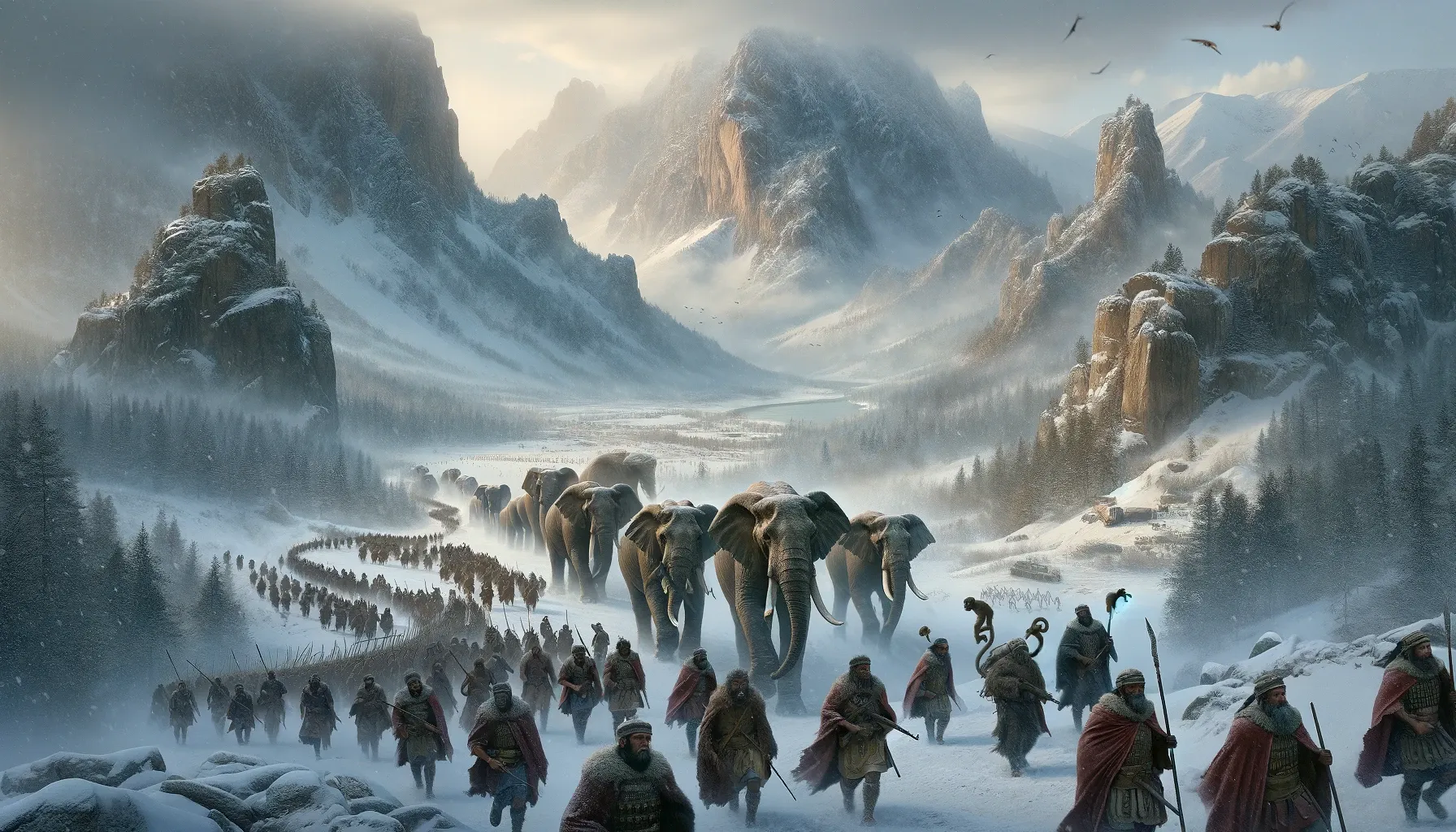
In 218 BC, Hannibal Barca, the Carthaginian general, embarked on one of history's most audacious military campaigns: crossing the formidable Alps to invade Rome from the north. This feat, involving tens of thousands of soldiers, cavalry, and famously, 37 war elephants, remains a marvel of ancient warfare and strategy. Hannibal's journey through the Alps was not just a military maneuver but a bold statement of defiance against Rome, the superpower of the era.
The Prelude to the Crossing
Hannibal was born in 247 BCE in Carthage, now modern-day Tunisia, during the aftermath of the First Punic War that left his nation defeated and dishonored. His father, the esteemed general Hamilcar Barca, nurtured in Hannibal a profound enmity towards Rome, along with a resolve to rectify the losses suffered by Carthage. Rapidly advancing in the Carthaginian military ranks, Hannibal demonstrated remarkable strategic acumen and unwavering determination from a young age. Following his father's death in 229 BCE, Hannibal assumed command of Carthage's forces in Spain. In the ensuing years, he significantly extended Carthage's dominion, notably seizing the city of Saguntum.
This aggressive move against a Roman ally precipitated the Second Punic War. This war set the stage for this epic journey. Carthage, seeking to expand its influence in the Mediterranean and avenge its losses from the First Punic War, turned to Hannibal. Known for his military genius, Hannibal devised a plan to strike at the heart of Roman power by an unexpected route – through the treacherous Alps.
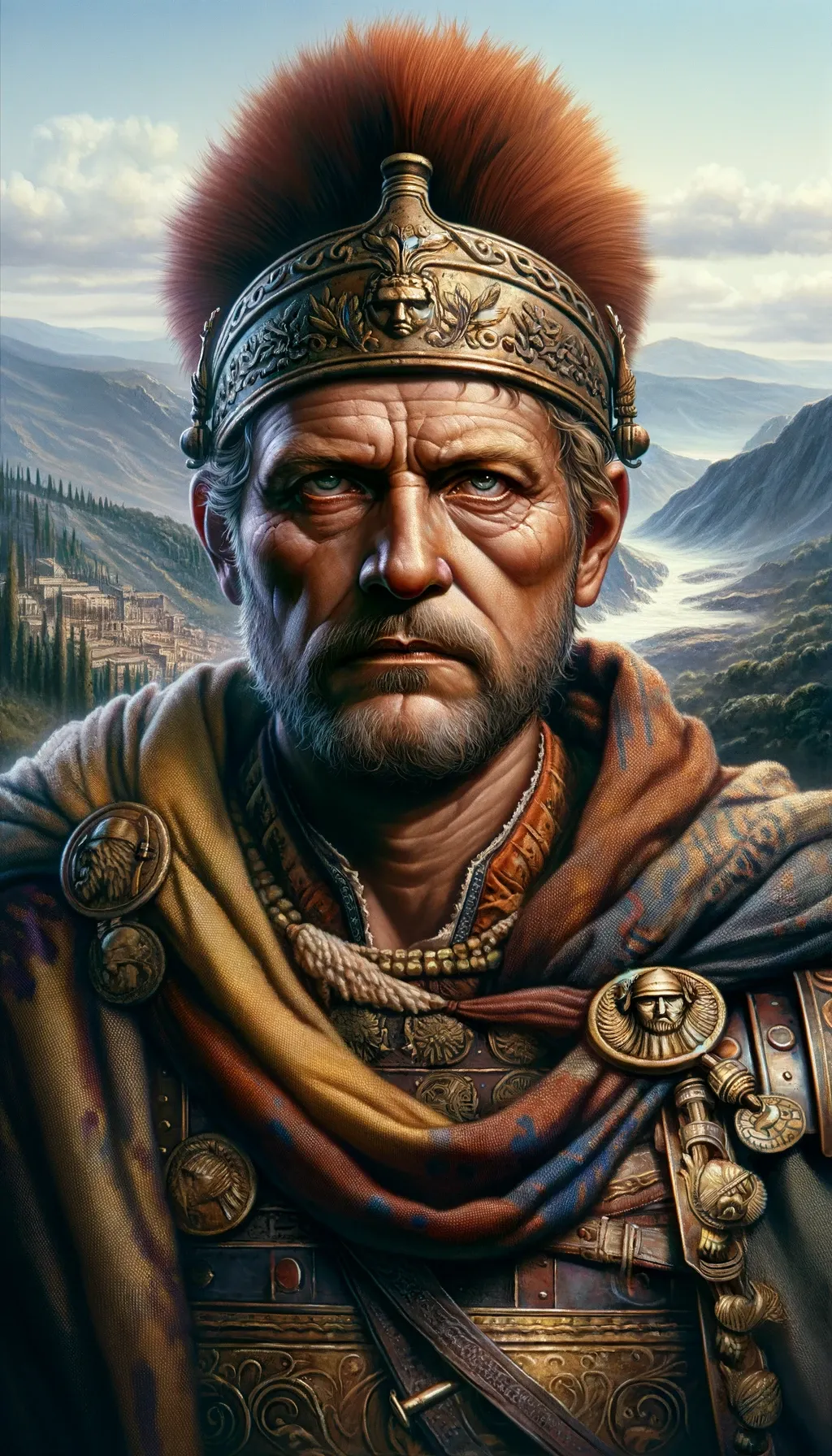
The Route Through the Alps
The exact path Hannibal took has been the subject of debate for centuries. Recent research, including geological and archaeological evidence, suggests that Hannibal may have crossed through the Col de la Traversette, one of the highest and most difficult passes. This route, while perilous, would have allowed Hannibal to emerge in the Po Valley, an area already hostile to Rome, where he could rally support.
It is understood that Hannibal's forces followed the Rhône River in southern France, bypassed Avignon, and after their Alpine crossing, engaged in combat near the Ticinus River before advancing towards southern Italy. Unfortunately, no Carthaginian records of this journey have been preserved. However, the Greek historian Polybius and the Roman historian Livy have documented the terrain traversed by Hannibal, including various rivers and mountain elevations, in their historical accounts. These descriptions offer clues to the possible path taken by Hannibal's army through the Alps, despite Polybius writing 70 years and Livy 120 years after the events occurred. The precise route based on their writings has been a topic of debate for many generations, which describe the journey as extremely daunting.
As Hannibal's forces made their way up from the Rhône Valley in Gaul, they faced relentless assaults from local mountain tribes. These tribes, familiar with the landscape, set up ambushes, hurled stones, and caused chaos. While the Carthaginian army encountered fewer disturbances during their descent, they were then confronted with the inherent dangers of the mountains themselves. The descent into Italy presented steeper slopes and narrower paths, bordered by sheer drops, posing a lethal challenge.
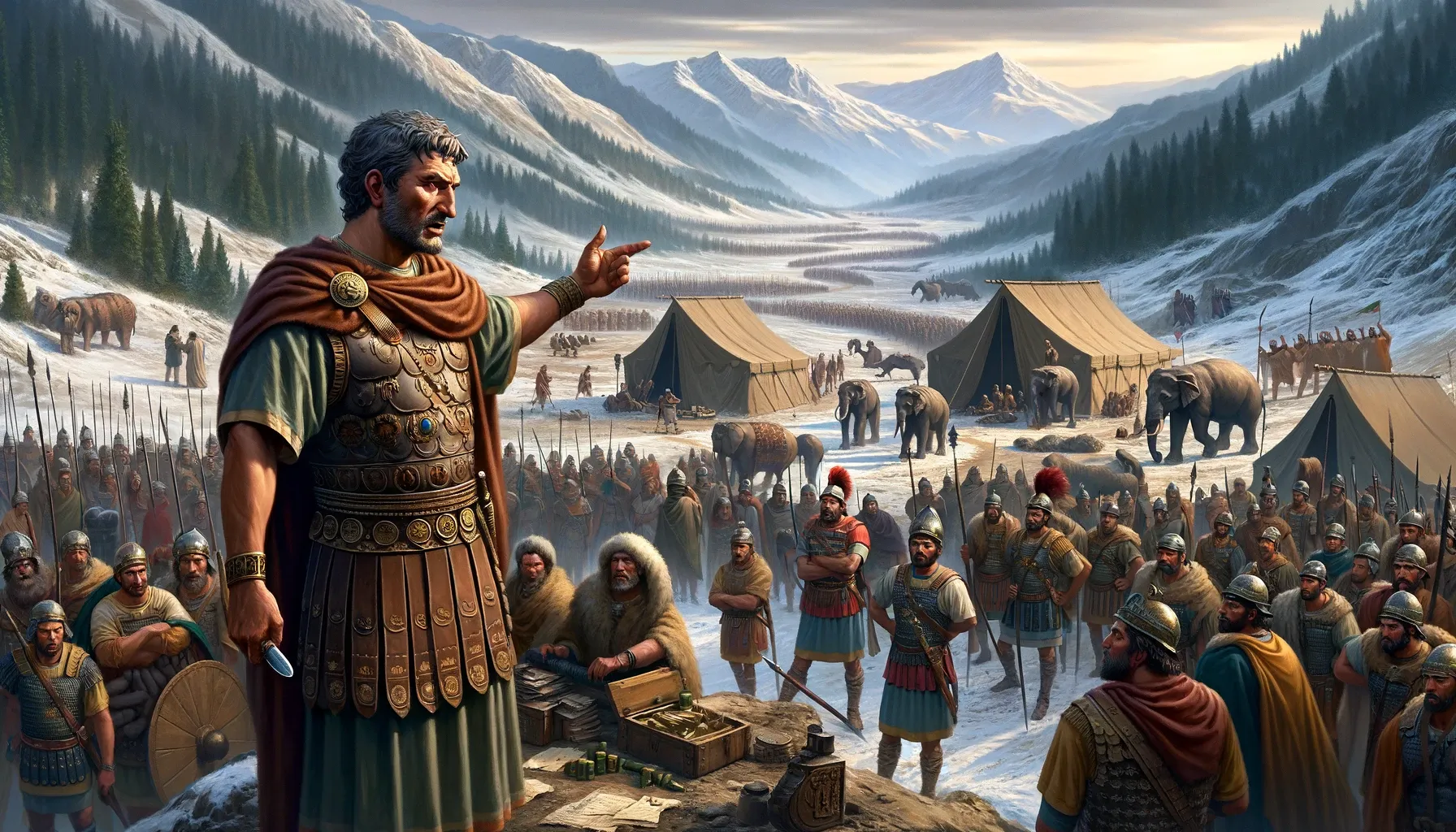
“Because of the snow and of the dangers of his route [Hannibal] lost nearly as many men as he had done on the ascent". “Since neither the men nor the animals could be sure of their footing on account of the snow, any who stepped wide of the path or stumbled, overbalanced and fell down the precipices.” Polybius
Eventually, they encountered a section where the route appeared completely blocked, as described by Livy:
" A narrow cliff falling away so sheer that even a light-armed soldier could hardly have got down it by feeling his way and clinging to such bushes and stumps as presented themselves”.
Polybius also notes,
"The track was too narrow for the elephants or even the pack animals to pass. At this point the soldiers once more lost their nerve and came close to despair."
Faced with daunting slopes adjacent to the path, Hannibal attempted an alternate route, only to find the snow and mud too treacherous for passage. Consequently, he directed his soldiers to forge a pathway through the debris. Following intense effort, they managed to lead the men, horses, and mules down the incline, reaching areas free of snow. The elephants, however, presented a unique challenge, requiring three days to clear a sufficiently wide path. Polybius recounts that:
“[Hannibal] succeeded in getting his elephants across, but the animals were in a miserable condition from hunger”.
Polybius and Livy both recorded that Hannibal's progress was hindered by a blockade formed by rockslides. Polybius, drawing on direct accounts from survivors of Hannibal's forces, detailed the obstruction as comprising two separate landslides, with newer rubble piled atop older. In 2004, Bill Mahaney, a geomorphologist from York University in Toronto and head of an international research team, determined through fieldwork and analysis of aerial and satellite images that among the potential Alpine crossings, only the Col de Traversette exhibited significant rockfall deposits above the snowline, matching the description of the barrier encountered by Hannibal.
Mahaney searched the terrain for evidence. Both Polybius and Livy note that Hannibal encountered a blockage due to rockslides. Polybius, obtaining his details directly from interviews with Hannibal's army survivors, provided a thorough description of the rockslide, noting it was made up of two separate landslides: one newer layer atop an older one. In 2004, through field investigations and analyzing aerial and satellite images, Mahaney discovered that among all the speculated paths, only the Col de Traversette presented significant rockfall accumulations above the snowline, consistent with the described barrier.
The Crossing
Despite the daunting obstacles, Hannibal's army crossed the Alps in just 16 days, a testament to their discipline and Hannibal's leadership. The descent was as treacherous as the ascent, with the army facing steep slopes and the risk of avalanches. Yet, the sight of the Italian plains from the mountain's peak would have bolstered the morale of Hannibal's weary troops, promising them that the hardest part of their journey was behind them.
By the time Hannibal's forces arrived at the Alps around late September or early October of 218 B.C., winter was quickly on its way, leaving them with no time to spare. The troops were outfitted for the chilly conditions and possibly modified their footwear with early versions of what we know today as crampons, enhancing their grip on the snowy terrain.
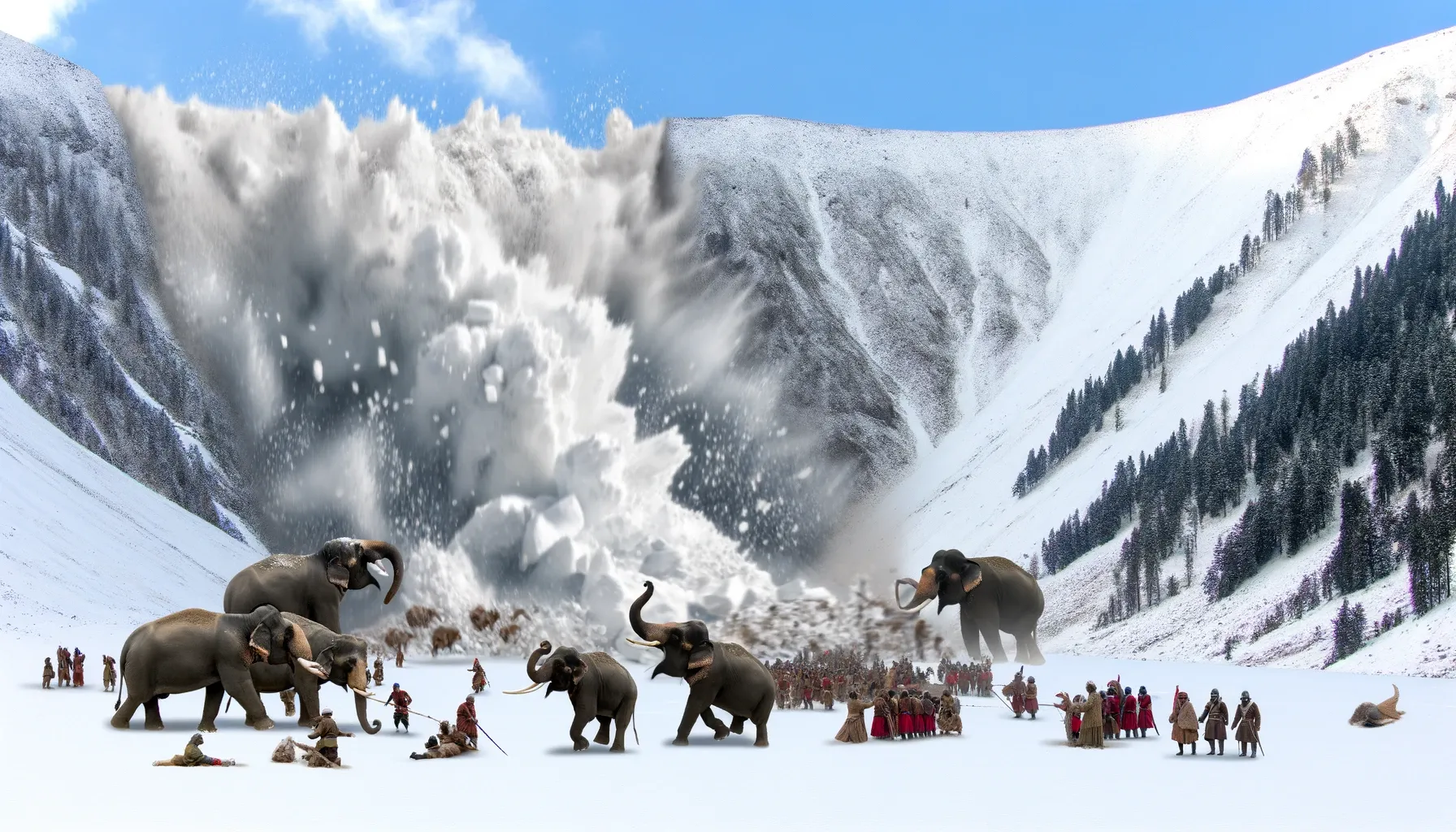
Recent investigations and analyses of soil samples, which revealed large quantities of manure, have led many scholars to identify the Col de la Traversette as the probable route chosen by Hannibal. This path, while being more precipitous than others, offered the shortest route. The elephants from Africa and Asia, accustomed to mountainous terrains in their native environments, would have navigated such landscapes naturally. It's believed that some of the Asian elephants might have been descendants of those introduced to North Africa by the Ptolemies after Alexander the Great's incursions into India, making their way through the Alps on the broadest paths available.
The exact number of troops Hannibal led is unknown, with estimates suggesting 20-40,000 infantry, 6-12,000 cavalry, and 37 elephants, as per Polybius and Livy. Only twenty elephants survived the Alpine crossing, and by the time Hannibal neared Rome, only Surus, a one-tusked Asian elephant known as "The Syrian," remained. Plautus notes that Surus was adorned with a red cloth and possibly bore a red shield and a howdah, which Hannibal used as a vantage point, especially after losing an eye to an infection after the Battle of Lake Trasimene.
The Descent
Regrettably for the Carthaginian forces, the downward journey proved to be more treacherous and steep than their initial ascent into the mountains. According to Polybius, the Carthaginians found themselves slipping and sliding as they made their way down the incline.
Polybius wrote:
“It was impossible for a man to keep his feet,” adding “the least stumble meant a fall, and a fall a slide, so that there was indescribable confusion, men and beasts stumbling and slipping on top of each other.”
In time, the Carthaginian troops reached the valley floor, greeted by warmer temperatures and verdant scenery. Hannibal's immediate success was undeniable. Over the following years, he waged war against the Romans on their soil, securing numerous victories and dealing significant casualties. His army annihilated at least 50,000 Roman soldiers in the 216 B.C. Battle of Cannae. However, Hannibal lacked the necessary support and resources to launch a direct assault on Rome, a situation likely exacerbated by his family's tense relations with the Carthaginian senate.
Hannibal was ultimately summoned back to protect Carthage against Roman forces, culminating in his defeat at the Battle of Zama in 202 B.C. This loss in the Second Punic War marked the end of Carthage's rivalry with Rome, and fifty years on, Rome razed Carthage to the ground, annexing its lands into the Roman Empire. Despite the eventual fading of the empire Hannibal sought to defend, his bold crossing of the Alps remains a testament to his daring and strategic genius, celebrated through the ages.

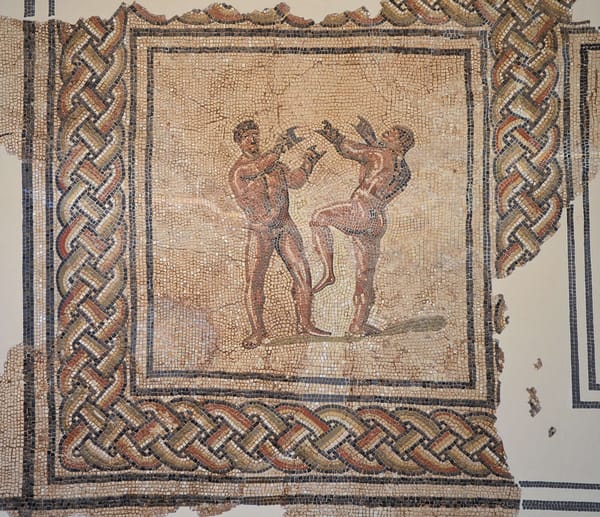

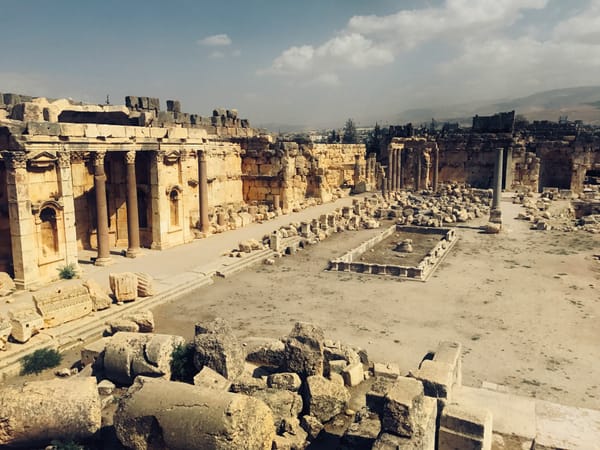
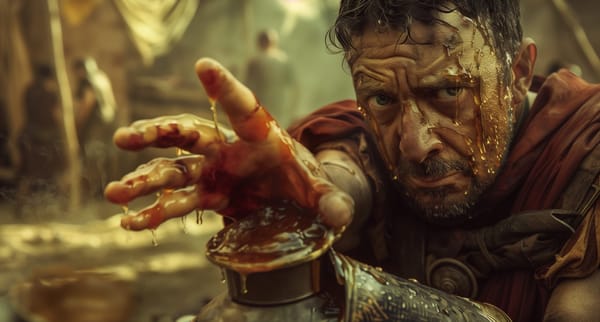
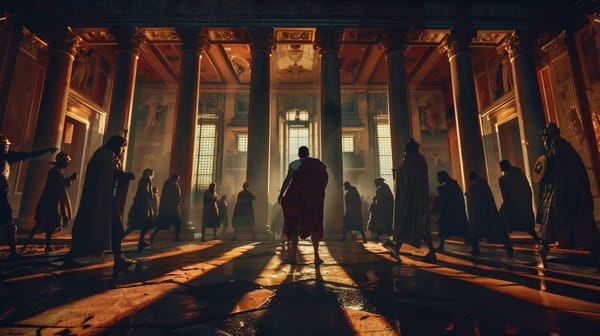



About the Roman Empire Times
See all the latest news for the Roman Empire, ancient Roman historical facts, anecdotes from Roman Times and stories from the Empire at romanempiretimes.com. Contact our newsroom to report an update or send your story, photos and videos. Follow RET on Google News, Flipboard and subscribe here to our daily email.
Follow the Roman Empire Times on social media: